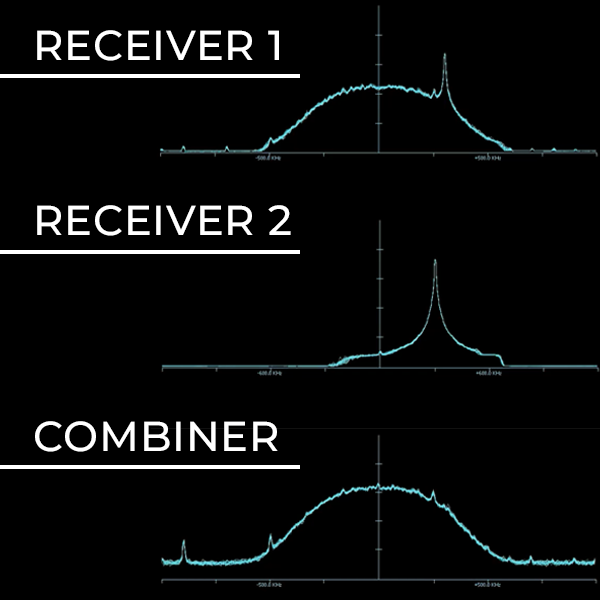Improving RF Communication with Diversity Combining: A Guide to GDP RF Receivers
VIEW THE TECH OVERVIEW SHEETS: COMING SOON!
In the world of RF communication, there are various factors that can interfere with signal quality, including fading, interference, and other impairments. These issues can lead to decreased reliability and performance, which is where diversity combining technology comes into play. Diversity combining is the practice of combining multiple copies of the same signal that have traveled different paths, such as through different polarizations, frequencies, time/codes, or spatial locations, to improve overall signal quality.
Diversity combining is crucial in RF communication because it allows for improved signal reliability and performance in challenging environments. By combining signals that have traveled different paths, the impact of fading, interference, and other impairments can be significantly reduced, resulting in better signal quality and reliability.
The GDP Model 44xx line of Receivers is a prime example of the benefits of diversity combining technology. These receivers feature advanced diversity combining technology that effectively mitigates common range interferences. This allows for improved signal quality and reliability, making them an excellent choice for a variety of applications, including military and aerospace communications, unmanned aerial vehicles (UAVs), and more.
In summary, diversity combining technology plays a crucial role in RF communication by improving signal quality and reliability. With the use of advanced technology, such as the GDP Model 44xx line of Receivers, the impact of fading, interference, and other impairments can be significantly reduced, resulting in better overall performance. Whether for military, aerospace, or commercial applications, diversity combining technology is an essential tool for ensuring reliable and efficient communication.


